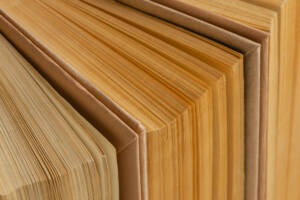In the wake of the recent pandemic and cost of living crisis, upcycling has become a popular way of reinventing home interiors, due to its cost-effectiveness. It’s possible to upcycle most items of furniture, and this flexibility is another factor that has contributed to its popularity.
In this article from Builders Marketplace, we’re going to explain what upcycling is and how to upcycle a bedside table. We’ll take you through all the different stages of this process, from start to finish. By the end of the article, you should feel confident enough to take on your own bedside table upcycling project!

What is Upcycling?
Upcycling is the process of improving a piece of furniture through preparation and decorative techniques to give it a new lease of life. Following an upcycling process, a piece of furniture will have a higher monetary value than it did before.
Preparing the Bedside Table for Upcycling
It’s important to prepare your bedside table for upcycling, and you can do this using a few methods – removing hardware, cleaning, sanding, patching and repairing.
Removing Hardware
Firstly, we recommend removing any hardware that is currently attached to your bedside table. This is to ensure that they don’t become damaged during the upcycling process. It also makes it easier to sand and clean the rest of the unit once any hardware has been removed.
Once the upcycling process has been completed, you can easily re-attach any hardware that you have removed. It’s worth noting that any hardware that you keep should be in good condition, or else it might look out of place once you’ve completed the upcycling process.
Cleaning and Sanding
The main part of the preparation process is to clean and sand down your bedside table. Cleaning can be done using a damp cloth or sponge with some cleaning solution and involves removing dirt, grime and other debris from the surface of the table.
You can sand your bedside table using either an electric sander or some sandpaper, and it’s worth noting that your bedside table should be completely dry before sanding it. The purpose of this is to remove the top layer of the bedside table’s finish or paint.
By creating a new, smooth surface, you’ll be eliminating any scratches or other imperfections on your table. This new surface will then be ready to receive new paint or treatment during the upcycling process.
When choosing your sandpaper, ensure it has enough grit to evenly sand the surface of your bedside table. Once you’ve completed this step, it’s worth cleaning your table again to remove any dust or debris.
Patching and Repairing
The final stage of preparation is the patching and repairing stage. These steps might be necessary during your upcycling project, especially if your table has any clear damage that needs addressing.
You might be asking yourself, what is patching? Well, patching involves filling in any cracks, holes and gaps in the surface of your table. You can do this by using a wood filler or another patching compound. Once patched, your table will have an even surface for any upcycling materials to adhere to.
Make sure you allow any patching compound to dry completely before moving onto the next stage of the process.
Repairing is a more commonly used phrase, and this involves fixing any broken or damaged parts of your bedside table. This includes table legs, drawers, or other fixtures. You may need to use a range of tools and materials to make the repairs, including wood glue, screws or other materials. Ensure each repair is secure before moving onto the next stage of the process.
If you’ve made some patches or repairs using screws or nails, you can lightly sand the area afterwards to give the table a smooth finish again.
The patching and repairing stage is vital for the longevity of your new upcycled bedside table. By making repairs and patching any areas that require it, you’re ensuring that your table will have a longer lifespan.

Upcycle Bedside Table Ideas
There are many upcycle bedside table ideas to choose from, however we’re going to cover three of the main ones – painting, staining and decoupage.
Painting the Bedside Table
One of the easiest and most popular upcycling techniques used is painting. Giving your bedside table a fresh coat of paint can really transform it visually, helping it suit your interiors perfectly.
Always start with a base coat of paint, as this step is often underutilised. By applying a light base coat using primer, you’ll allow further coats to adhere to the surface of your table better, creating a solid painting job with no streaks. After applying a base coat, you can lightly sand your table by hand to remove any little drips of paint.
Once your base coat has dried, you can apply a liberal coating of paint to your bedside table. Don’t worry about being neat here, as we’ll focus on the little details in a later coat. This coat is all about covering the majority of the surface of your table with a colour of your choice.
Once your liberal coat has dried, we recommend applying another coat of paint. During this coat, use a small paintbrush to fill in any gaps you may have missed during the first one. You can also use a paint roller on any large surface areas to iron out any drips.
Once you’ve finished painting your upcycled table, apply a coat of clear varnish to help protect it.
Staining the Bedside Table
Another popular technique when upcycling a bedside table is staining. Using a lint-free cloth, we recommend applying the stain of your choice in the direction of the grain of the wood. Ensure you don’t leave too much stain on the surface of your table after each coat, instead use a sufficient but not excessive amount.
Apply 2–3 coats of stain to your bedside table, allowing it to dry completely between each coating. Once you’re happy with the stain coverage on your table, we recommend treating it with a clear coat. This will help preserve your bedside table for years to come.
Decoupaging the Bedside Table
Another way to upcycle a bedside table is by decoupaging it. Decoupage is the art of decorating an object using coloured paper cutouts. This technique can help you create a truly unique upcycled bedside table, as the patterns and images on paper cutouts will most likely be more detailed than what someone could achieve through painting.
Simply find the paper cutouts you’d like to attach to your bedside table and cut them to size. You’ll then have to use decoupage glue to attach the paper to the surfaces of your table. This technique can be fiddly, but once you’ve completed it, the results are 100% worth it.

Tips for Maintaining an Upcycled Bedside Table
Once you’ve completed your upcycled bedside table project, you want to ensure that you take care of your table for many years to come. You can do this through cleaning, avoiding scratches and damage and keeping it fresh and new.
Cleaning
The most obvious way of maintaining your upcycled bedside table is through cleaning. Ensure you are cleaning your table regularly and using materials and treatment that aren’t going to damage its surfaces.
For example, using a nylon wire brush is likely to damage the surface of your table.
Avoiding Scratches and Damage
We recommend doing as much as you can to avoid scratches and damage to your bedside table. Although this can’t be completely avoided, you can keep it in a sensible location that won’t fall victim to damage.
Ensure that you have coasters on your bedside table if you’re likely to have a drink next to your bed. This will stop any liquid leaking from the glass or mug, which may damage the table.
Keeping it Fresh and New
As time goes by, your bedside table may benefit from some light upcycling work to help keep it looking fresh and new. This is a fantastic way to maintain your table, and we definitely recommend doing so.
These jobs should take less time than the main upcycling project, and they’ll help to keep your table healthy and looking great.
Conclusion
Upcycling a bedside table can be a great project for someone with limited DIY experience. Although a range of techniques can be used throughout the process, they are simple techniques that don’t require much experience or knowledge to perform.
We hope that you’ve learned how to upcycle a bedside table by reading this article and feel confident enough to give it a try! Upcycling can save you lots of money, and can be a thoroughly enjoyable experience at the same time. In fact, many people have upcycling as one of their main hobbies.
Builders Marketplace challenges you to upcycle a bedside table sometime soon!

Related DIY Articles
- Wheelie bin Storage Ideas
- Garden Designs With Railway Sleepers
- Wood Panelling Interior Ideas
- DIY Around the World
- Quick Fixes That Every DIYer Should Know
Frequently Asked Questions
Can You Paint a Table Without Sanding It Down?
Yes you can, however, we recommend sanding your bedside table down to achieve a nice, smooth finish.
How Can I Make My Bedside Table Look Nice?
We recommend using the following techniques to make your bedside table look nice during an upcycling project:
- Cleaning
- Sanding
- Patching
- Repairing
- Treating
- Painting
All of these techniques will not only make your bedside table look nicer, but they’ll preserve its longevity, so you can enjoy your table for a long time.
Can I Paint My Bedside Tables?
Yes! Painting bedside tables can give them a new lease of life or help them suit a new interior. If you’re upcycling the bedside table, it’s worth going through the several preparation stages before painting the table.



